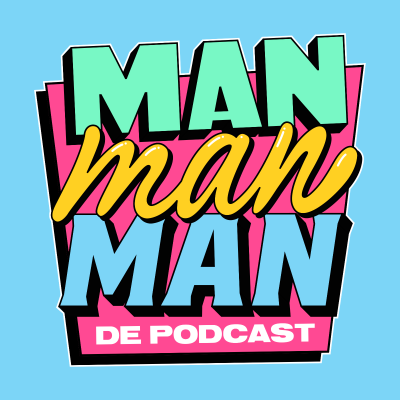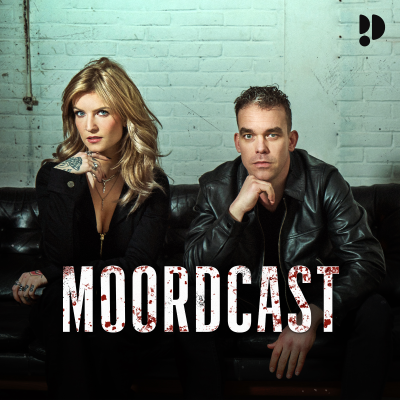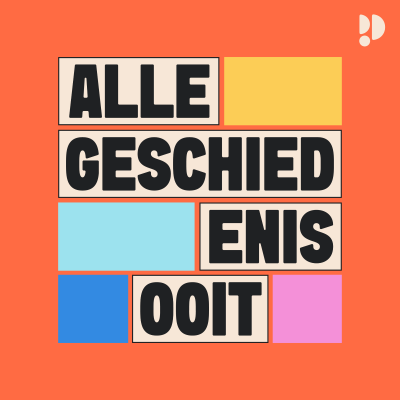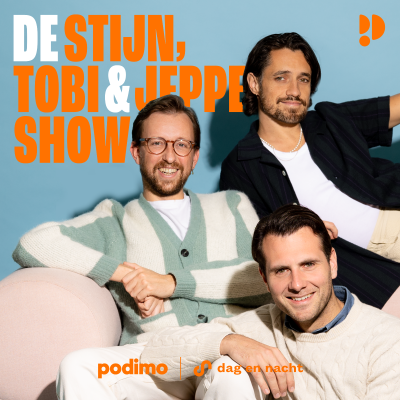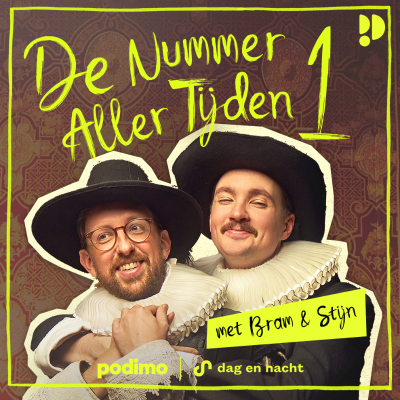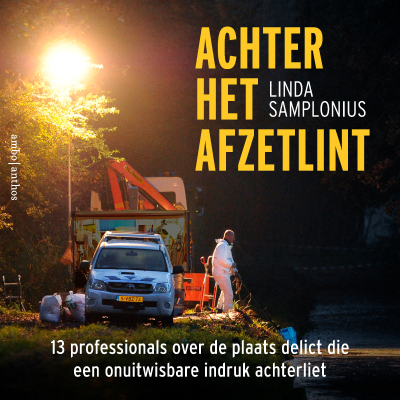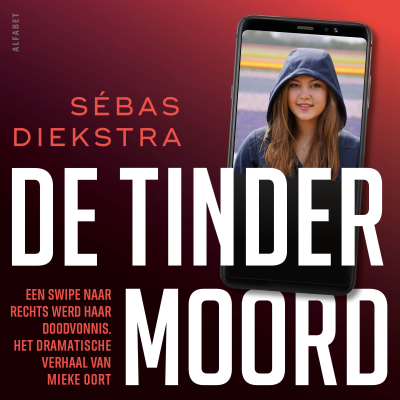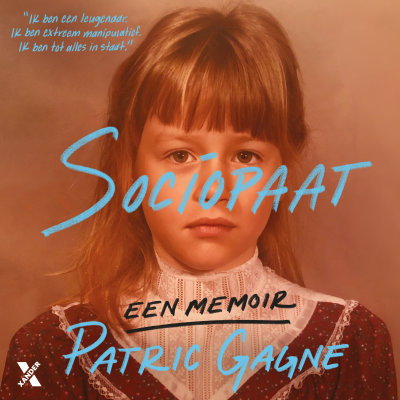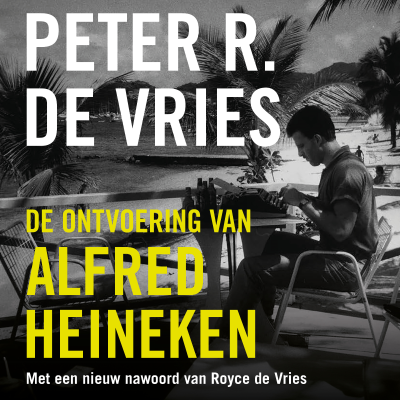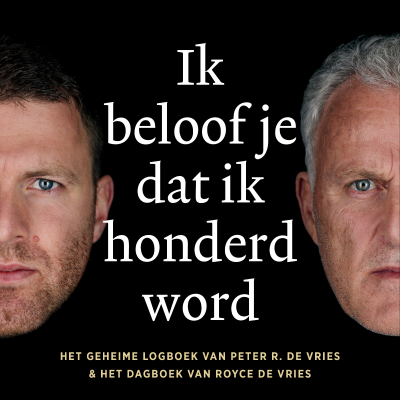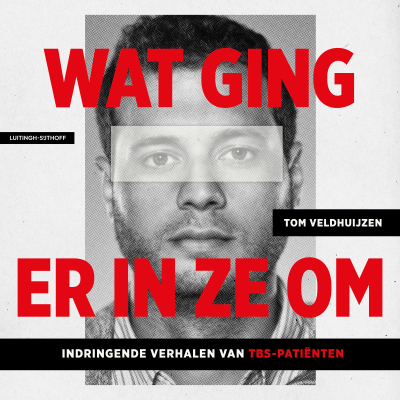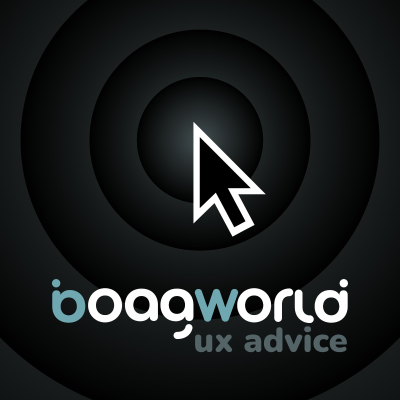
Boagworld: UX, Design Leadership, Marketing & Conversion Optimization
Podcast door Paul Boag, Marcus Lillington
Boagworld: The podcast where digital best practices meets a terrible sense of humor! Join us for a relaxed chat about all things digital design. We dish out practical advice and industry insights, all wrapped up in friendly conversation. Whether you're looking to improve your user experience, boost your conversion or be a better design lead, we've got something for you. With over 400 episodes, we're like the cool grandads of web design podcasts – experienced, slightly inappropriate, but always entertaining. So grab a drink, get comfy, and join us for an entertaining journey through the life of a digital professional.
Probeer 3 dagen gratis
€ 9,99 / maand na proefperiode.Elk moment opzegbaar.
Alle afleveringen
563 afleveringenCREATING PERSONALITY-DRIVEN DESIGN EXPERIENCES In this week’s episode of the Boagworld Show, we’re joined by none other than Andy “The Pioneer” Clarke. We dig deep into the role of aesthetics in UX, explore how AI can conduct user interviews, and debate how to approach pricing conversations with clients. Alongside our usual banter, you’ll find insights into why design needs personality and how creative direction can add real value, whether you’re designing marketing sites or B2B dashboards. We also introduce a new AI-powered user research tool, share some standout reading recommendations, and end with the usual Marcus groaner (you’ve been warned). APP OF THE WEEK: WHYSER [https://whyser.ai/] This week we took a look at Whyser [https://whyser.ai/], an AI tool designed to conduct user interviews on your behalf. You simply set up your interview goals and questions, and the AI takes care of the rest; scheduling, conducting, and even analyzing interviews. What impressed us most was how well the AI adapted its questions based on our answers. It felt remarkably natural and even asked follow-up questions relevant to what we’d said earlier. That’s a big deal for those of us who struggle to find time to do interviews at scale. Whyser isn’t without its drawbacks; it does put a layer between you and your users, which can dilute the empathy you build through real human conversation. But if time or access is limited, this could be a game changer. Especially helpful for teams that rarely get to talk to users directly. TOPIC OF THE WEEK: WHY AESTHETICS STILL MATTER IN UX We hear it all the time: “Design is about solving problems.” That’s true, but it’s not the whole picture. In this episode, we explore the undervalued role of aesthetics in UX and why visual design, art direction, and brand personality still matter. FROM USABLE TO MEMORABLE We kicked off with a discussion about how too many websites today feel like “colored-in wireframes.” They’re functional but lack soul. The shift toward product-thinking has stripped personality from digital experiences. As Andy put it, “Everything looks like Bootstrap.” Yet, personality plays a critical role in how users connect with your brand. Whether it’s a SaaS dashboard or a marketing homepage, how a product feels impacts engagement, trust, and even long-term retention. People stick around when something makes them feel something—even if they can’t quite explain why. THE COGNITIVE LOAD LINK There’s a practical side to aesthetics too. Good design improves usability not just through layout but also by boosting mood. A more pleasant experience reduces cognitive load, making interfaces feel easier to use. That means aesthetics aren’t just about making things pretty; they’re a lever for user performance and satisfaction. It’s not fluff; it’s function wrapped in emotion. ART DIRECTION IN UNLIKELY PLACES Andy gave a great example from his time working on a cybersecurity app. Hardly a glamorous field, yet he found space to inject moments of brand personality through microinteractions, onboarding flows, and visual consistency. Even in utilitarian tools, design can reflect a brand’s values and improve the user experience. As he put it: “You don’t need to delight, but you do need to differentiate.” REFRAMING CREATIVITY The problem, we all agreed, starts in education. Many young designers are trained to focus on flows, not feelings. They're brilliant at getting users from A to B but haven’t been taught how to make that journey enjoyable or memorable. Andy argued that curiosity is the missing ingredient. Design isn’t just about function, it’s about communication. And communication thrives on references, storytelling, and creativity. He showed us how keeping a library of visual influences, whether it’s old magazine layouts, album covers, or supermarket packaging, can help inject new life into projects. SELLING THE VALUE OF AESTHETIC THINKING Websites are easy to build these days. What clients are really paying for is the ability to tell their story well. That’s where we, as designers, add value. Andy’s take? Spend 95% of your budget on creativity and 5% on implementation. Tools like Squarespace can handle the build, what matters is how it looks, feels, and communicates. That’s where your edge lies. And when clients say, “But we already have a brand,” the job becomes about interpreting that brand, stretching it into a full visual language, not just slapping a logo onto a template. So if you’ve felt the creative spark dimming lately, maybe it’s time to step away from your Figma files and pick up an old design annual, flick through a vintage magazine, or just take a walk with curiosity as your guide. READ OF THE WEEK This week we didn’t highlight specific articles, so no recommended reading to share. That said, the conversation itself was rich with references; from Blue Note album covers to 'Smash Hits' magazine layouts—and might inspire you to go digging through your own design bookshelf. LISTENER QUESTION OF THE WEEK We didn’t have a listener question either, but the discussion turned to one that’s always on designers’ minds: How do I handle client feedback without compromising the design? Andy’s advice was simple but brilliant: only give clients choices over things they can’t mess up. Stakeholders will always want to contribute; so let them. But steer them toward harmless decisions. Let them choose between two acceptable color variations or headline treatments, but don’t give them free rein over critical layout or concept work unless you're okay with every option on the table. Another smart tip: give clients creative choices using metaphors. Instead of asking “Do you want this to feel formal or informal?” ask “If your brand were a movie or celebrity, who would it be?” It’s a great way to pull out emotional nuance without falling into clichés like “trustworthy” and “professional” (which, let’s face it, everyone says). And finally, validate your design decisions with user testing. Don’t let testing dictate the design, but do use it to confirm you’re on the right track. That way, you move from subjective opinions to informed decisions and you keep the project moving forward. MARCUS'S JOKE And to close the show, here’s Marcus’s joke (we apologize in advance): > Scientists have found that cows produce more milk when the farmer talks to them. > > Apparently, it’s a case of in one ear and out the udder. We’ll leave you to groan in peace. Thanks for listening, or reading, if you’re one of our show notes faithful. If you enjoyed Andy’s insights, be sure to check out his work over at Stuff & Nonsense [https://stuffandnonsense.co.uk/]. Until next time! Find The Latest Show Notes [https://boagworld.com/show/]
This week, we catch up on Paul’s latest adventures—from a memorable dinner with Todd “the accessibility guru” where we talked WCAG 3, to a deep dive into the shifting landscape of design job titles. We’ll share an app that brings real form fields into your Figma prototypes, unpack why “product designer” is suddenly on everyone’s profile, and wrap up with a classic Marcus joke to send you on your way. APP OF THE WEEK We’ve been wrestling with Figma’s built‑in prototyping limitations—particularly the lack of real form fields—and this week we discovered Bolt [https://bolt.new/]. Bolt lets you import a Figma frame URL and instantly spin up an interactive prototype complete with working inputs and text fields. That means you can run realistic usability tests without hand‑coding forms or cobbling together workarounds. TOPIC OF THE WEEK: BRINGING CLARITY TO THE CHAOS OF DESIGN JOB TITLES In an era when “UX designer,” “UI designer,” “product designer,” and “service designer” all coexist, you might feel like you need an advanced diploma just to understand your own role. We certainly do. Let’s unpack what each title really implies, why the trend toward “product design” worries us, and how you can bring crystal‑clear definitions into your next job posting or team conversation. WHY JOB TITLES MATTER Even if you’re happy wearing multiple hats, inconsistent naming can cause real headaches: * Employer confusion: Hiring managers may post for a “product designer” but expect the traditional UX responsibilities you’ve mastered. * Scope creep: Without clear boundaries, you’ll end up doing support tickets one week and sales decks the next—often without the title or compensation to match. * Perception gaps: Outside the design bubble, “designer” still conjures images of pretty pictures, not strategic problem‑solvers. Getting titles straight not only sets expectations for you, it helps stakeholders understand the value you bring. THE RISE OF PRODUCT DESIGN Lately, many companies are retiring “UX designer” in favor of “product designer.” On the surface, this feels like career progression: a broader focus that spans UI, analytics, and even marketing. Yet we see two risks here: 1. Internal focus: “Product designer” can imply you’re optimizing existing features and metrics, rather than uncovering latent user needs. 2. Ambiguous boundaries: When design expands outward, it often steps on the toes of customer success, support, and even engineering roles. If your title leans toward “product,” make sure you and your team agree on whether that includes user research, email flows, or post‑launch monitoring. BREAKING DOWN THE ROLES Here’s how we interpret the four most common titles—and how they overlap: UI DESIGNER UI designers focus on the look and feel of your screens. Their goal is to reduce friction and make interactions intuitive. Think pixel perfection, animation timing, and responsive layouts. They might not set research objectives, but they’ll ensure that every button state feels just right. UX DESIGNER UX designers own the end‑to‑end experience. From SEO‑driven landing pages to post‑purchase emails, they obsess over every touchpoint. If you care about conversion funnels, user flows, or cross‑channel consistency, you’re in the UX camp. PRODUCT DESIGNER Product designers straddle the middle: they build interfaces and track success metrics, but they’re also tasked with aligning features to business goals. In healthy organizations, they champion user advocacy and roadmap prioritization, but that balance can tip too far toward internal KPIs. SERVICE DESIGNER Service designers operate backstage. They optimize the processes and systems—think support scripts, training materials, or fulfillment pipelines—that empower on‑stage teams to deliver seamless experiences. Their scoreboard? Operational efficiency and scalability. HOW TO BRING CLARITY TO YOUR TEAM Labels alone won’t solve confusion. Here’s how we recommend making roles crystal clear: Define scopes explicitly In every job description or team charter, list the deliverables you own—and those you don’t. For example, “Responsible for wireframes and prototypes, not email automation.” Align on success metrics Agree on the KPIs or user outcomes tied to each role. If you’re a UX designer, maybe it’s task completion rates; if you’re a service designer, it might be first‑response times. Foster cross‑role collaboration Schedule regular syncs between UI, UX, product, and service designers so everyone sees the handoffs and dependencies. That shared visibility prevents silos. Revisit titles periodically As your organization evolves, carve out time every six months to discuss whether roles—and their titles—still reflect who does what. By naming responsibilities clearly and encouraging open dialogue, you’ll reduce friction, align expectations, and help everyone—from junior hires to C‑suite—understand what “designer” really means in your organization. RESOURCES OF THE WEEK Here are two go‑to resources for leveling up your UX practice: LEADERS OF AWESOMENESS [https://community.centercentre.com/] A free community and weekly webinar series led by Jared Paul that challenges conventional UX metrics and dives into real‑world best practices. BAYMARD INSTITUTE [https://baymard.com/] An extensive repository of user‑research reports covering ecommerce, web forms, mobile patterns, and more—now searchable via AI to surface exactly the studies you need. MARCUS JOKE > “I never wanted to believe my dad was stealing from his job as a road worker. But when I got home, all the signs were there.” Find The Latest Show Notes [https://boagworld.com/show/]
This week’s episode takes a deeper look at how we define good user experience—and argues it’s time we move beyond the narrow focus of usability. We explore how friction can sometimes enhance an experience, and why emotional design is essential if we want to create interfaces that stick in users’ minds. We also review a new batch of AI-powered design tools and uncover where they currently fall short. Plus, we look at how AI can still be incredibly useful for user research—when used the right way. Finally, we answer a question from our Agency Academy about giving feedback in a way that doesn't crush your colleagues, and Marcus closes out with one of his typically pun-tastic jokes. APP OF THE WEEK We explored two sides of AI in this episode—one disappointing, one surprisingly powerful. AI WEBSITE BUILDERS: NOT QUITE THERE YET While on the road (and supposedly on holiday), Paul trialed four AI-powered tools that promise to design and code entire websites based on your prompts. The tools included: * UXPilot [https://uxpilot.ai/] * V0 [https://v0.dev/] * Polymet [https://polymet.ai/] * Loveable [https://lovable.dev/] All four are generating excitement among many, but from a UX perspective, we found them underwhelming. Results were inconsistent at best—white text on white backgrounds, bland copy, missing CSS, and difficult-to-edit layouts. Even with carefully crafted prompts, they failed to deliver production-ready (or even prototype-ready) experiences. If you’re curious, they’re cheap enough to try—but don’t expect them to replace designers or developers anytime soon. A NEW WAY TO USE AI: DEEP RESEARCH FOR USER INSIGHTS On the flip side, we’ve found AI incredibly useful for online user research, especially when time or resources make traditional methods tough. Paul used Perplexity [https://www.perplexity.ai/] to perform sentiment analysis across: * Social media mentions * Review sites like Trustpilot * Online forums like MoneySavingExpert He asked it to uncover what users liked, disliked, questioned, or hesitated over when it came to purchasing insurance. The results? Incredibly insightful—and backed up with linked sources to verify accuracy. You can also ask it to find testimonials that support key selling points, making it great for conversion optimization. If you're short on research time, tools like Perplexity offer a fast and surprisingly effective way to better understand your audience. TOPIC OF THE WEEK: WHY USABILITY ALONE ISN’T ENOUGH It all started in a casino. Well, sort of. While walking through a bank of overly-themed slot machines in Vegas, Paul had a realization: if a UX designer created a slot machine, it would probably be terrible. We’d remove all the friction. Strip away the flashing lights. Replace the reels with a simple “Win or Lose” button. It would be technically better, but emotionally dead. And that’s the problem. Too often in UX, we treat usability as the holy grail. We remove friction, optimize flows, and tidy up interfaces. But we sometimes forget the _emotional layer_—the personality, surprise, or joy that makes a product memorable. THE RISK OF STERILE DESIGN When we fixate only on usability, we risk creating something that is forgettable. Efficient, yes. Effective, perhaps. But emotionally flat. That’s not what builds brand loyalty. That’s not what users remember. It’s like eating a plain rice cake. Technically food. But not something you'd write home about. We need to learn from other industries. Slot machine designers understand user psychology on a visceral level. They’ve mastered the art of creating anticipation, excitement, even obsession. Not that we should copy their manipulative tactics—but we can learn from how they invoke emotion. Same goes for print designers, who often embrace bold creative expression. Or the restaurant industry, where service, ambiance, and delight matter as much as the food. EMOTIONAL STATES AFFECT USABILITY It’s not just about delight for delight’s sake. Emotional state directly affects cognitive load. When someone is stressed, even the simplest interaction feels hard. When they’re relaxed or entertained, they glide through even complex tasks. We need to design for these emotional states. A well-designed interface doesn’t just help users complete a task. It shapes how they feel about doing it. Consider the Mailchimp example. Back in the day, their UI was full of little delightful moments—from their chimp mascot Freddy to playful animations. None of it was strictly necessary. But it made the product feel human, friendly, and approachable. And it mattered. WHAT CAN WE DO? We should be testing and measuring more than just usability. Some suggestions: * Use semantic differential surveys. Give users a list of emotional adjectives and ask which ones best describe the experience. * Monitor sentiment through social listening. Tools like Perplexity can help uncover how people feel about your product online. * Track qualitative feedback. Those smiley-face buttons at airport security? They can work for digital experiences too. * Use metrics beyond task completion. Net Promoter Score (NPS), emotion mapping, and post-task satisfaction ratings all provide deeper insights. FINAL THOUGHT UX isn’t just about helping users complete a task quickly. It’s about how people feel while doing it—and how they remember that experience afterwards. The best designs don’t just work. They resonate. READ OF THE WEEK We found two fantastic reads this week that both hit close to home. * The Path to Design Leadership [https://designlab.com/blog/paths-to-design-leadership/] by Hang Le (who led teams at Dropbox, among others) outlines what real design leadership looks like. It’s not just about managing people or reviewing work—it’s about shaping business strategy, improving design quality, and driving cultural change. A must-read if you're looking to lead through influence, not just seniority. * Product Waste [https://www-mironov-com.cdn.ampproject.org/c/s/www.mironov.com/waste/amp/] by Rich Mironov offers a powerful way to frame design’s business value. It argues that 50% of product effort results in waste—features nobody asked for, used, or needed. Reducing this waste (even slightly) creates opportunities to redirect resources toward real innovation. We also love how this supports our recommendation to run a Strategic User-Driven Project Assessment [https://boagworld.com/boagworks/strategy/supa/] as a way of reducing risk and waste. LISTENER QUESTION OF THE WEEK > "How can I provide feedback on site improvements without offending the person who originally designed it—especially if they’re sitting in the room?" — Paul, from the Agency Academy A common challenge—especially when you're trying to improve a product while preserving team morale. Here’s how we approach it: Start by acknowledging the difficulty of the situation. We’ve been on the receiving end of feedback ourselves, and it never feels great—even when it’s valid. So open by saying something like, “Look, I know giving feedback on work is tough, especially when the person who made it is right here—but I promise this isn’t about blame, it’s about improvement.” Next, set the tone early: “Every website is a compromise.” Between budgets, legacy systems, stakeholders, and tight deadlines, no one gets to implement a perfect vision. Acknowledge that and it’ll help lower defense. If someone gets defensive, listen. Then reflect their concern back: “Absolutely, tight deadlines would make that tough.” That empathy often disarms tension more than anything else. We also make sure to start with praise. Highlight what’s working. That way, when the critique comes, it lands better. And most importantly: keep the focus on the future. Instead of what went wrong, talk about what could be improved moving forward. Frame your feedback as collaborative enhancement. And yes—if all else fails, a bit of humor (carefully deployed) can help lighten the mood. Just maybe don’t start with “Who built this shitshow?” MARCUS’S JOKE > Why are mountains funny? Because they’re _hil_arious. Thanks for joining us for another episode. If you’ve got a question you’d like us to tackle, or a joke to offer up, drop us an email at paul@boagworld.com [paul@boagworld.com]. And if you’re not already in our Slack community [https://boagworld.com/l/slack/] or the Agency Academy [https://boagworld.com/boagworks/agency/academy/], come say hello. Until next time—don’t just design for usability. Design for memory. Find The Latest Show Notes [https://boagworld.com/show/]
On this week's Boagworld Show, we're exploring how UX design leaders can take control of their roles within organizations, why UX agencies might feel doomed (but probably aren't), and how AI is reshaping the way we code and collaborate. We'll dig into practical strategies for UX leaders, share insights on the changing landscape for UX agencies, and provide guidance for navigating AI in your workflows. APP OF THE WEEK This week's recommendation is UXPressia [https://uxpressia.com/], a powerful yet easy-to-use visualization tool. UXPressia helps teams collaboratively create customer journey maps, personas, and impact maps. Although the visual output isn't necessarily designer-quality, it excels at engaging stakeholders and team members in user research activities. It's particularly useful for empowering non-designers to contribute meaningfully to UX strategies. TOPIC OF THE WEEK: DEFINING YOUR ROLE AS A UX DESIGN LEADER As UX professionals, many of us often find ourselves caught in cycles of endless implementation, working on tasks dictated by others rather than strategically influencing user experience. If you're feeling overworked, understaffed, and under-appreciated, it's time to redefine your role. Here’s how you can proactively take control and transform your position from pixel-pusher to strategic UX leader. CLARIFY YOUR GOALS Senior management frequently sets high-level organizational objectives that, while seemingly vague, offer essential clues to aligning your UX efforts strategically. Start by identifying those broader goals—whether increasing efficiency, targeting new demographics, or enhancing sustainability—and ask yourself how UX can meaningfully contribute. Present these alignment opportunities to your manager, framing your UX role around supporting company-wide goals. This shifts your focus from reactive tasks to proactive strategic initiatives. LEVERAGE YOUR RESOURCES WISELY Rather than dwelling on resource limitations, carefully evaluate what’s already at your disposal: * Budgets and Software: Identify any discretionary funds or tools available. * Internal Staff and External Support: Consider tapping into colleagues from other departments or engaging reliable external agencies. Establishing preferred supplier lists helps manage quality and ensures that external agencies align with your UX standards. * Autonomy and Training: Use your authority to delegate smaller UX tasks, freeing yourself to focus on strategic planning and education. This perspective allows you to create impactful strategies within existing constraints. For instance, shifting your role to training internal teams on basic UX practices like user research and testing can extend your influence without increasing headcount. EXPAND YOUR INFLUENCE True UX leadership isn’t just about completing projects; it’s about cultivating a user-centered culture throughout your organization. Here's how: * Education and Empowerment: Provide training materials and workshops to build UX capabilities within other departments. * Policies and Standards: Establish clear UX standards and guidelines, creating a framework everyone in your organization can follow. * Metrics and Accountability: Introduce meaningful UX metrics that encourage internal competition and drive continuous improvement. For instance, turning analytics into league tables among departments can spark healthy competition and motivate better user experiences. Transforming your role into that of an internal UX consultant positions you to make a broader impact, aligning user-centric design with the overarching organizational strategy. By following these steps—clarifying your objectives, leveraging your resources, and expanding your influence—you can redefine your role as a UX design leader, shifting from mere execution to strategic empowerment. READ OF THE WEEK Jacob Nielsen recently wrote an intriguing article titled "Future is Lean, Mean and Scary for UX Agencies [https://www.uxtigers.com/post/ux-agency-future]". Nielsen predicts challenging times ahead for UX agencies, primarily driven by a shift towards more robust internal UX teams and the rapid rise of AI. However, we believe the narrative is somewhat skewed toward Nielsen's experience with larger organizations. While internal teams are expanding, they often remain overstretched, and the role of specialized UX agencies is still crucial. AI will indeed reshape the industry but likely as an enhancement rather than a replacement, empowering both in-house and external UX teams to deliver more sophisticated solutions rather than merely cutting costs. LISTENER QUESTION OF THE WEEK > Question: How should agencies handle clients who approach them with projects partially completed using AI-generated code, expecting it to be quick and cheap to finalize? This is a growing challenge as clients become increasingly confident in AI capabilities, sometimes overestimating what AI can deliver without professional oversight. Here's our approach to handling this: Clients may assume AI-generated code is nearly complete, but the reality is often different. AI-generated code may appear functional but frequently lacks: * Accessibility and Security: AI can produce code that seems correct but fails to meet essential standards. * Performance Efficiency: AI doesn't guarantee optimal performance, and expert human oversight is crucial. Clients may think professional review of AI-generated code is simple, but developers often find reviewing unfamiliar code more time-consuming than writing from scratch. Educating clients about this reality is essential. Position yourself clearly by explaining: * AI is powerful but requires human expertise to ensure the code is accessible, performant, and secure. * Reviewing AI-generated code is inherently complex, frequently taking longer than starting anew. Clarifying these points upfront can manage expectations and reinforce your value as professionals who ensure quality and reliability beyond what AI alone can achieve. MARCUS JOKE > "I asked the librarian if they had any books on paranoia. She whispered, 'They're right behind you.'" Find The Latest Show Notes [https://boagworld.com/show/]
On this week's Boagworld Show, we delve into the powerful concept of invisible user research - tackling how to conduct essential UX work even when stakeholders resist investing in formal research. We explore the often-overlooked impact of UX debt, crown a new champion among user-testing apps, and surprisingly, find ourselves nodding along with McKinsey on the strategic role of design leaders. APP OF THE WEEK This week, we're excited about Useberry [https://useberry.com], a versatile user-testing platform that covers a wide range of UX research tasks like card sorting, tree testing, five-second tests, preference tests, and single-task usability studies. It's particularly appealing due to its comprehensive features, straightforward user interface, scalability, and affordable pricing model. With a free tier for small tests and scalable packages allowing incremental purchases up to 2000 responses per month, Useberry makes rigorous user research accessible without heavy upfront costs. TOPIC OF THE WEEK: INVISIBLE USER RESEARCH One of the biggest hurdles in UX is convincing stakeholders of the importance of investing in user research. Often, organizations resist due to perceived cost, time constraints, or simply misunderstanding its value. However, this doesn't mean UX practitioners should abandon research altogether. Instead, we're advocating the concept of "invisible user research," embedding research seamlessly into the workflow without explicitly seeking permission or additional budgets. EMBEDDING RESEARCH INTO YOUR WORKFLOW Invisible user research is all about reframing how you incorporate research activities. Instead of flagging them as separate tasks, integrate research directly into your design activities. For example, avoid creating separate budget line items for user research; instead, simply extend your design phase slightly to accommodate quick, effective tests and validation steps. PRACTICAL APPROACHES Leverage everyday moments in your project timeline to slip in valuable research: * Stakeholder meetings: If stakeholders question the design or argue over choices, propose a quick user test as a neutral way to resolve debates. For instance, if a stakeholder believes users might miss an essential CTA, perform a quick five-second test. You'll have concrete data within hours. * Feedback delays: When awaiting feedback on your designs, use that downtime productively. Conduct small, targeted surveys or quick polls to fill knowledge gaps. * Routine presentations: When stakeholders request updates or progress presentations, add a quick round of user research to validate your work and strengthen your position. ADDRESSING COMMON OBJECTIONS Stakeholders often push back against research for several common reasons, but here's how you can respond effectively: * "It's too costly or time-consuming": Highlight how small-scale tests (like quick surveys or five-second tests) take minimal time and cost very little. * "Our users are too busy or inaccessible": Utilize surrogate groups, such as customer support teams or sales representatives who interact daily with users. * "Your research is biased or insufficient": Emphasize that even limited testing is more reliable than subjective opinions. Additionally, use tools like ChatGPT to ensure questions are unbiased and clearly phrased, or offer to conduct further rounds of testing to reassure stakeholders. REFRAMING RESEARCH AS EFFICIENCY AND RISK MANAGEMENT Positioning invisible user research as efficiency gains or risk management can be particularly persuasive. Explain that catching design issues early prevents costly revisions later. Frame user research as a routine activity that ensures project success, rather than as an optional extra. PRAGMATISM OVER PROCESS Finally, remain pragmatic. Rather than adhering rigidly to a formalized research process (extensive discovery phases, multiple rounds of card sorts, or lengthy reports), opt for quick, targeted interventions tailored to immediate needs. This responsive approach ensures research stays relevant, actionable, and minimally disruptive to the workflow. By adopting invisible user research, you embed essential UX validation into everyday project activities, ensuring user-centered outcomes without needing formal approval at every turn. READ OF THE WEEK We have three great articles recommended for strategic UX leaders: * Are You Asking Enough of Your Design Leaders? [https://www.mckinsey.com/capabilities/mckinsey-digital/our-insights/are-you-asking-enough-from-your-design-leaders] from McKinsey emphasizes treating design leaders as strategic partners at the executive level, advocating for a more impactful role beyond implementation tasks. * How to Bring Value as a Design Leader Without Getting Hands-On [https://medium.com/design-bridges/hands-off-design-leadership-e1608240e169] outlines practical ways to effectively lead UX teams by stepping back from hands-on design tasks and focusing on team support and organizational communication. * UX Debt [https://www.nngroup.com/articles/ux-debt/] by Nielsen Norman Group introduces the concept of UX debt, akin to tech debt, highlighting how design shortcuts during development can accrue and negatively impact user experiences, providing strategies for managing and mitigating this debt effectively. LISTENER QUESTION OF THE WEEK This week, we tackle a listener's common frustration: "How can I convince stakeholders to fund user research when they view it as unnecessary?" The reality is, stakeholders often view user research as an optional expense rather than an essential investment. To combat this, you need to reframe the conversation: * Highlight risk management: Show stakeholders how user research mitigates potential risks and prevents costly mistakes. Emphasize that decisions grounded in user data can avoid expensive rework later. * Tailor your argument: Speak directly to stakeholder motivations. If you're addressing a finance person, stress the cost savings from preventing development errors. For marketers, highlight how understanding users leads to stronger market positioning. For developers, stress efficiency and reducing rework. * Normalize research: Integrate user research as a standard part of your workflow, removing it as a separate line item in budgets. Stakeholders often accept research implicitly when it's framed as part of design processes rather than as additional, discretionary tasks. By subtly repositioning user research within your existing processes and clearly communicating its practical, immediate benefits, you significantly increase the likelihood of stakeholder buy-in. MARCUS JOKE And finally, Marcus's inevitable joke of the week: > "I accidentally drank a bottle of invisible ink last night. Now I'm in A&E, waiting to be seen." Thanks for joining us—we'll catch you next time! Find The Latest Show Notes [https://boagworld.com/show/]
Probeer 3 dagen gratis
€ 9,99 / maand na proefperiode.Elk moment opzegbaar.
Exclusieve podcasts
Advertentievrij
Gratis podcasts
Luisterboeken
20 uur / maand
